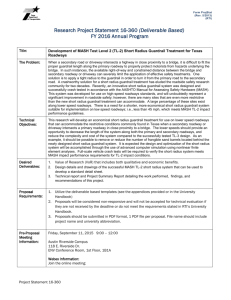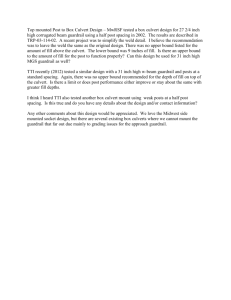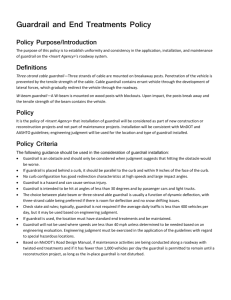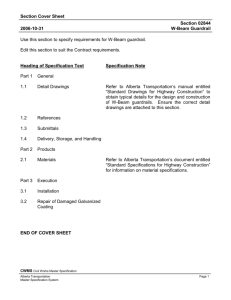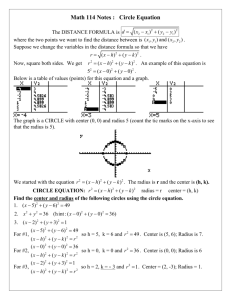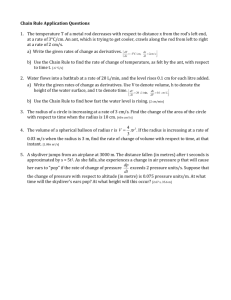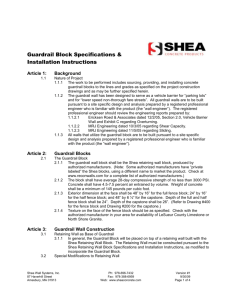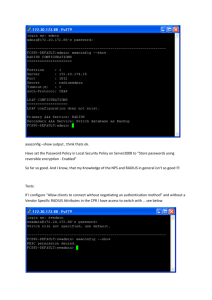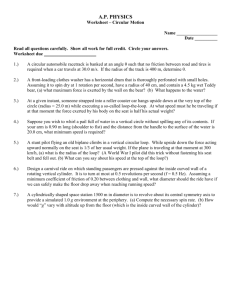Determining the Radius of the Bent Guardrail
advertisement
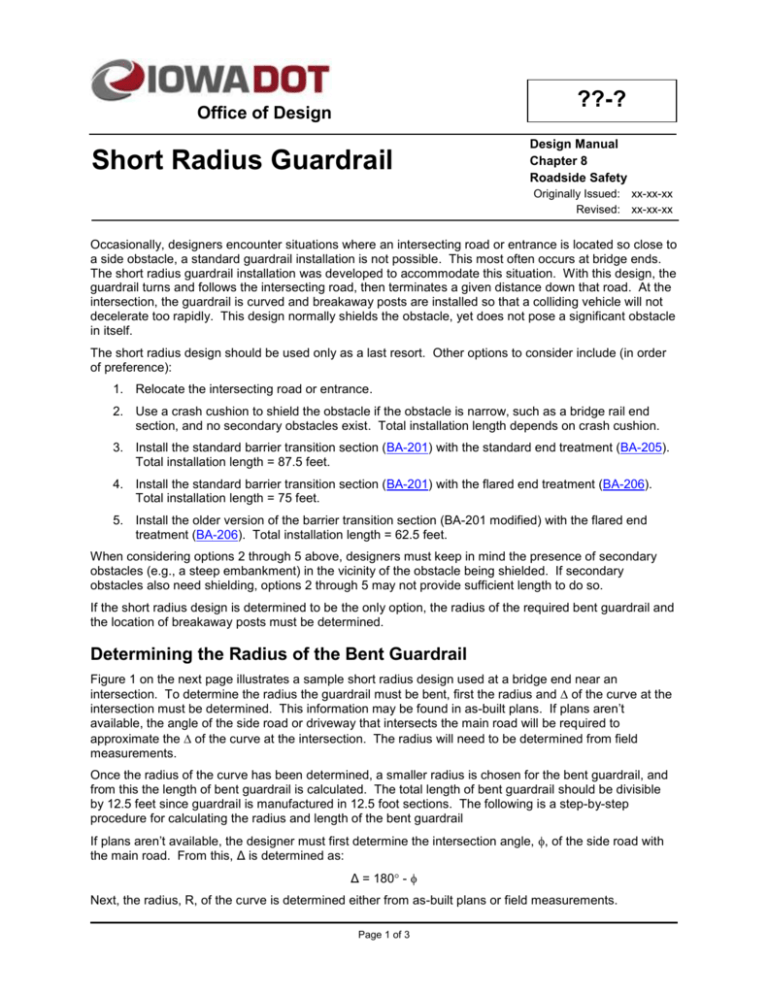
??-? Office of Design Short Radius Guardrail Design Manual Chapter 8 Roadside Safety Originally Issued: xx-xx-xx Revised: xx-xx-xx Occasionally, designers encounter situations where an intersecting road or entrance is located so close to a side obstacle, a standard guardrail installation is not possible. This most often occurs at bridge ends. The short radius guardrail installation was developed to accommodate this situation. With this design, the guardrail turns and follows the intersecting road, then terminates a given distance down that road. At the intersection, the guardrail is curved and breakaway posts are installed so that a colliding vehicle will not decelerate too rapidly. This design normally shields the obstacle, yet does not pose a significant obstacle in itself. The short radius design should be used only as a last resort. Other options to consider include (in order of preference): 1. Relocate the intersecting road or entrance. 2. Use a crash cushion to shield the obstacle if the obstacle is narrow, such as a bridge rail end section, and no secondary obstacles exist. Total installation length depends on crash cushion. 3. Install the standard barrier transition section (BA-201) with the standard end treatment (BA-205). Total installation length = 87.5 feet. 4. Install the standard barrier transition section (BA-201) with the flared end treatment (BA-206). Total installation length = 75 feet. 5. Install the older version of the barrier transition section (BA-201 modified) with the flared end treatment (BA-206). Total installation length = 62.5 feet. When considering options 2 through 5 above, designers must keep in mind the presence of secondary obstacles (e.g., a steep embankment) in the vicinity of the obstacle being shielded. If secondary obstacles also need shielding, options 2 through 5 may not provide sufficient length to do so. If the short radius design is determined to be the only option, the radius of the required bent guardrail and the location of breakaway posts must be determined. Determining the Radius of the Bent Guardrail Figure 1 on the next page illustrates a sample short radius design used at a bridge end near an intersection. To determine the radius the guardrail must be bent, first the radius and of the curve at the intersection must be determined. This information may be found in as-built plans. If plans aren’t available, the angle of the side road or driveway that intersects the main road will be required to approximate the of the curve at the intersection. The radius will need to be determined from field measurements. Once the radius of the curve has been determined, a smaller radius is chosen for the bent guardrail, and from this the length of bent guardrail is calculated. The total length of bent guardrail should be divisible by 12.5 feet since guardrail is manufactured in 12.5 foot sections. The following is a step-by-step procedure for calculating the radius and length of the bent guardrail If plans aren’t available, the designer must first determine the intersection angle, , of the side road with the main road. From this, Δ is determined as: Δ = 180 - Next, the radius, R, of the curve is determined either from as-built plans or field measurements. Page 1 of 3 Chapter 8—Roadside Safety Section ??-?—Short Radius Guardrail A slightly smaller radius (3 to 5 feet smaller than the radius of the intersection curve), Rg, is chosen for the bent guardrail. An approximation for the length of the bent guardrail is calculated as: Lg = π×Rg ×∆ 180 Since the length of bent guardrail must be divisible by 12.5 feet, round Lg to the nearest multiple of 12.5 and calculate Rg: Rg = 180×Lg π×∆ This new value of Rg should be at least one foot smaller than the radius of the intersection curve. If it isn’t, decrease Lg by 12.5 feet and recalculate Rg. Figure 1: Sample Washington Design. Determining the Location of Breakaway Posts Cable Release Terminal (CRT) posts will be required in the installation of the bent guardrail to serve as breakaway posts. To determine the number of CRT posts required, a 15 line must drawn so that it touches a point on the edge of the shoulder. This point is labeled as point ‘A’ on Figure 2. Page 2 of 3 Chapter 8—Roadside Safety Section ??-?—Short Radius Guardrail Figure 2: Determining the number of CRT posts. After this line is drawn a point can be seen where the edge of the traveled way and the 15 line intersect, this is labeled as point ‘B’. From point ‘B’ a 5 line can be drawn until it intersects the guardrail. The area between the 5 and 15 line is an estimation of the “possible impact area” and this area may require the installation of CRT posts in place of standard 6” 8” wood posts. The “possible impact area” should be visually checked to safeguard any oncoming traffic so they do not hit any part of the guardrail at a steep angle. Anywhere within the bent guardrail where there is a danger of hitting the guardrail at a steep angle must contain CRT posts. Road Design Detail 540-?? provides construction details for the short radius design. The end treatment used depends on the function of the side road. Use Standard Road Plan BA-205 or BA-206 for high speed side roads such as highways. Use Standard Road Plan BA-203 for low speed side roads such as private entrances. Use Tabulation XXX-XX to tabulate quantities. Page 3 of 3
